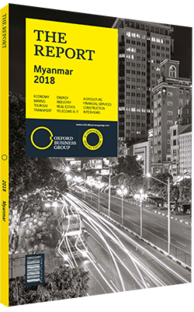U Khin Maung Aye, Chairman, Lat War: Interview

Interview: U Khin Maung Aye
How do you predict demand for the development of new industrial parks will evolve?
U KHIN MAUNG AYE: Contrary to the current state of residential and office markets, the industrial property market offers interesting growth prospects. Over the last few years we have seen growing interest from foreign investors to come set up their manufacturing units and take advantage of the country’s abundant supply of labour. The take-up rate for industrial land is very high, and we believe most of the available land for industrial development in Yangon is now occupied. We expect this expansion to continue in the coming years because there is a growing number of manufacturing companies applying for permits and licences from the Myanmar Investment Commission. With new factories opening every week, the local industrial market is likely to become increasingly competitive. Yangon, by far the most industrialised region in the country, will remain the preferred area for investment.
However, because of rising costs in Yangon, we will also see companies seeking opportunities in other regions, particularly in Mandalay. Regarding the new wave of industrial investors, we are seeing demand driven by garment and shoemaking factories, cement batching plants, packaging producers and simple electronic manufacturing units. A major problem is the lack of supply of industrial areas with quality facilities and basic infrastructure. It is still difficult to find industrial zones with basic integrated services, such as waste and water treatment, or reliable access to power. In Yangon one of the best industrial areas is Thilawa’s industrial park in the special economic zone, even if labour-intensive industries find it difficult to invest there.
What are the growth prospects for mixed-use residential and commercial complexes in Yangon?
KHIN MAUNG AYE: The residential market has cooled, and we will probably have to wait six to eight more months to see positive change. Since 2016 there were almost no new applications to construct new buildings, and there are not many new major developments in the residential market. Despite the current downturn, Yangon remains the best market for the development of mixed-used residential and commercial complexes.
This will likely take place outside of downtown due to the layout of Yangon’s city centre, which was mostly created by the British at the end of the 19th century. Heritage mapping also makes it difficult to transform some areas. Thus, mixed-used projects are being developed in uptown areas with more space and better accessibility. There are also opportunities to increase these facilities if Yangon moves forward with the New Yangon City project. However, construction will likely not happen before 2020. Developers will more actively consider the project once they can access the city plan, and once infrastructure and road connectivity develop.
Why did real estate and construction companies focus on the top-tier residential market in Yangon?
KHIN MAUNG AYE: We often hear concerns about an oversupply of top-tier residential units. However, if prices remain high, as they currently are, it is because there is market demand. In fact, rental yields in Myanmar are much better than in other regional markets such as Thailand. Furthermore, the overall availability of condominiums in Yangon is very high.
Most of the condominiums on the market are of intermediate quality, and that is precisely the segment lacking robust demand, due to the low purchasing power and small size of the middle class. Because these units are not being purchased, prices are likely to keep dropping. Contrary to this, I see the top residential products being purchased. Affordable and low-cost housing is also experiencing high demand. However, it is difficult to convince developers to enter this market due to the low profit margins. This means the government will have to step in. Without this intervention, there will not be more affordable units on the market.
You have reached the limit of premium articles you can view for free.
Choose from the options below to purchase print or digital editions of our Reports. You can also purchase a website subscription giving you unlimited access to all of our Reports online for 12 months.
If you have already purchased this Report or have a website subscription, please login to continue.

